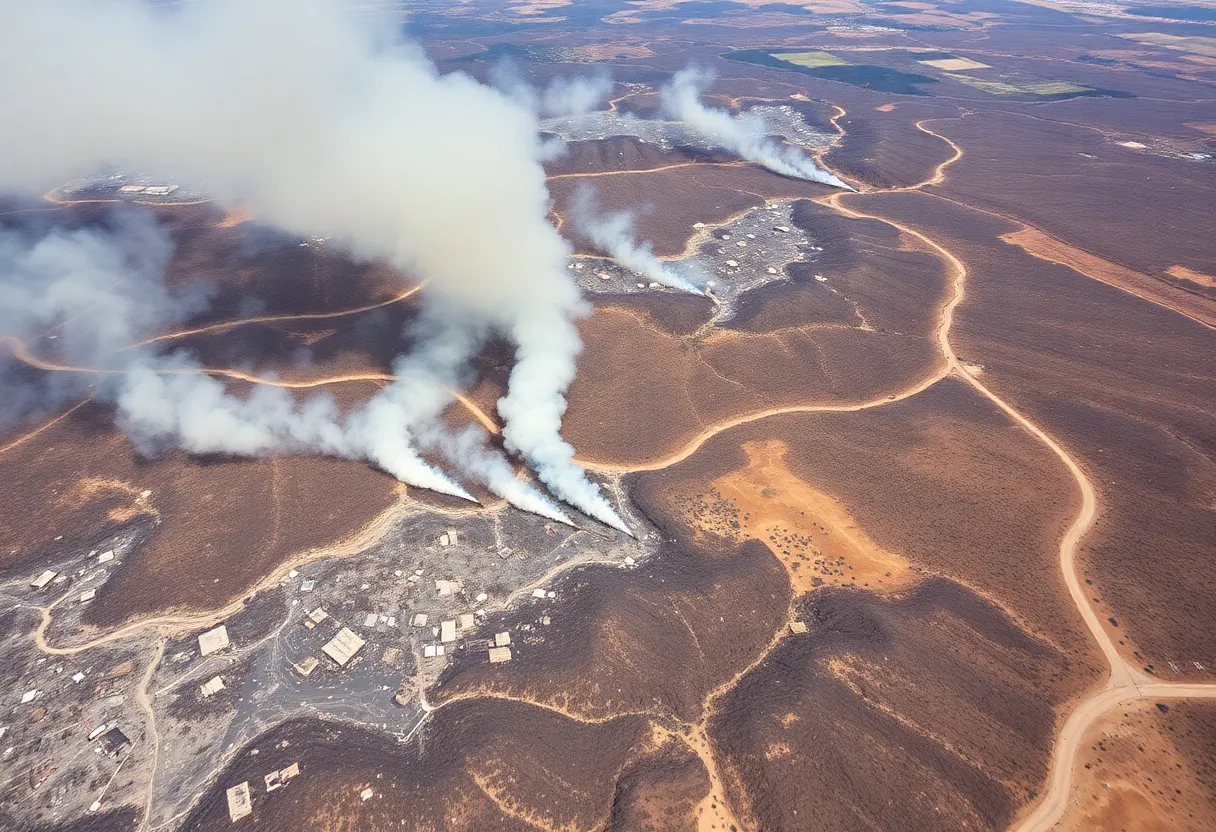News Summary
As California Wildfires Blaze, Asbestos Hazards Emerge as a Deadly Aftermath
The devastating wildfires sweeping through California have left a wake of destruction in their path, claiming at least 24 lives and obliterating more than 12,000 buildings across over 60 square miles of land. As firefighters continue their valiant battle against the flames, a shadowy threat looms large in the aftermath of the wreckage—asbestos.
The Silent Killer: What You Need to Know
Asbestos, once a staple in construction materials prior to 1980, is now recognized as a potent carcinogen, the sole culprit behind mesothelioma, a rare but aggressive form of cancer. When wildfires strike, they disturb confined asbestos found in older structures, releasing fine fibers into the air that can be inhaled or ingested. This is particularly concerning as 73% of structures within the affected areas were built before 1980, heightening the risk of exposure.
Health Risks from Ash and Debris
Burned buildings also release toxic debris that includes not only asbestos fibers but also hazardous substances like lead and arsenic. The inhalation of these materials can cause severe health issues, including lung cancer, asbestosis, and scarring of lung tissue. There is no safe level of asbestos exposure, meaning that even a brief encounter can pose serious long-term health risks to those affected.
The Role of First Responders in the Crisis
Firefighters and emergency personnel are at a heightened risk as they work diligently to quell the flames, often in close proximity to burning structures that may contain asbestos. The current situation adds an alarming layer of danger, as first responders face both the threat of fire and the risk of inhaling toxic materials. With ash from these infernos capable of remaining airborne for between 4 and 80 hours, the potential for exposure lingers long after the flames are extinguished.
Safety Measures and Recommendations
It is crucial for residents and those in the vicinity of the fires to wear protective gear, such as N95 masks, to minimize the risks associated with inhaling harmful particles. Individuals are advised to refrain from sifting through ash and debris, as this can disturb asbestos fibers and release them into the air uncontrollably. Cleanup efforts should be left to certified asbestos abatement professionals who are trained to handle hazardous materials safely.
Long-Term Implications of Wildfire Fallout
Authorities are increasingly aware that the fallout from these wildfires may contribute to long-term health issues within affected populations. Historical data from past wildfires, such as those in Maui, underscore the persistent hazards posed by toxic debris and the potential for lasting health challenges. Past incidents have revealed that individuals exposed during these crises could suffer immediate respiratory issues, setting the stage for more serious complications down the line.
Urgency in Addressing the Hazard
As the fires rage on and communities transition from immediate danger to recovery, vigilance about asbestos remains as critical as ever. Officials emphasize staying informed and exercising caution. Cleanup plans should wait for professionals to declare the area safe, as hasty efforts could exacerbate the dangers posed by toxic airborne particles.
In conclusion, while the flames may eventually dim, the hazardous effects woven into the aftermath will require careful management and community awareness. As communities begin to sift through the wreckage, the message remains clear: prioritize safety, adhere to guidelines, and remain vigilant against the invisible threats that linger long after the fires have burned out.
Deeper Dive: News & Info About This Topic
HERE Resources
Terminal Diagnosis for 68-Year-Old Sparks Quest for Answers
Rising Awareness of Mesothelioma in Youths: A Hidden Danger
Pandemic Spikes Demand for Products, Uncovers Asbestos Risks
Asbestos Removal Efforts Gain Momentum in Paterson
Understanding the Ongoing Mesothelioma Crisis in America
Miami Investment Firm Acquires Leading Asbestos Abatement Provider Amid Wildfire Concerns
MassDEP Cracks Down on Asbestos Violations in Holyoke
The Undeniable Threat of Asbestos: A Looming Health Crisis
Drones Rise as Game Changer in Asbestos Management
Asbestos Alarms Ring as California Wildfires Rage On
Additional Resources
- Asbestos.com: Raging California Wildfires May Spread Toxic Asbestos
- Wikipedia: Asbestos
- Mesothelioma Guide: California Wildfires and Asbestos Exposure
- Google Search: California wildfires asbestos
- The New York Times: California Fire Debris
- Google Scholar: California wildfires asbestos
- Asbestos.com: Asbestos Warnings Issued for California Wildfires
- Encyclopedia Britannica: Asbestos



















